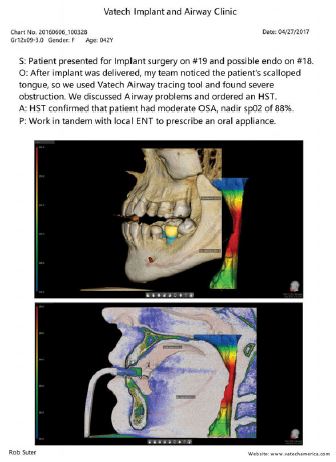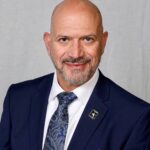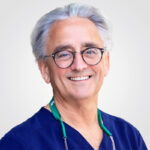
Physicians recently surpassed Dentists with the highest suicide rate among all professions. Why? Many MDs are burnt out, have marriages on the rocks, and have incredible college debts looming over them. With hospital mergers, consolidations, and CMS cutbacks, they are losing control and feeling the reimbursement squeeze like never before. They are forced to pick up shifts on the weekends, at Urgent Cares, and a lot of times work depressed as they try to live the Hippocratic oath. MDs are literally under the gun. They have more on their minds than “how to pick a Dentist to work with.”
The Dentist making Sleep appliances who is perplexed when a Physician doesn’t send any CPAP intolerant referrals after that one marketing visit to their office is missing the big picture. Did they not understand the referral form I left? Surely they read every line of 10 clinical papers that outlined Oral Appliance efficacy? Why aren’t they referring to me?
Over the last two decades I have spent a lot of time training companies and Dentists on the answers to these questions. I have lectured all over North America on how to market to Physicians. When I worked for ResMed we had a training program that trained DME representatives on how to market to MD’s. These DME companies dispense CPAPs… a lot of them. The training was all day and taught reps how generate more referrals. Companies like Apria have small armies of reps calling on the same MDs that RX all the CPAPs, showering attention on the coveted local Sleep MD. They may see this Sleep MD weekly, buying lunches, leaving chocolates, building strong relationships with the entire office, thus galvanizing their CPAP habits. This makes it tricky for a Dentist who tries 1-2 times to get past the gatekeeper, never sees the big MD, gets frustrated, and gives up. In one year, I trained more DMEs in the Chicago market than anyone in the company and became the #1 global territory manager for CPAP sales. Hence marketing to MDs works, but it takes strategy and persistence. I firmly believe that Dentists who want to market to MDs can use similar tactics to build referral alliances, and enjoy similar success, with four basic strategies. These strategies are:
- Solve problems
- Make an MD’s life easier
- Speak their language and use SOAP notes
- Come bearing gifts
Solve problems
I led a DDS-MD summit in Dallas, Texas with some of the top players in that market. They all came together to try to figure out how to treat more patients and automate CPAP intolerance to Oral Appliances. One Sleep MD, Dr. Raj Kakar, mentioned that he was using a certain Dentist because they solved a problem for him. The Dentist was using 3D Airway images to warm the patient up and propel them to his lab. Dr. Kakar went on to say that these same patients were more compliant to show up for sleep studies and go on therapy, most likely because they understood they were breathing through a constricted Airway. Dr. Kakar and I feel having 3D is a distinct advantage Dentists should leverage a lot more. Less than 1% of MD’s have CBCT and many know nothing about it. Yet 5-15% of DDS have 3D and that percentage is growing rapidly. Dentists with CBCT should always send an Airway scan, along with the referral, to the MD. Why?
An Airway scan illustrates the problem. That scan is the ‘best case scenario’ for the Airway, as good as the Airway will ever look. 3D scans should lead to more patients getting diagnosed and treated. For example, if you are doing an implant and the patient has scalloped tongue, worn down incisors, and masseters the size of Alaska, expand the FOV and trace their Airway. My bet is this implant patient has a bad Airway. Researchers in Spain showed that ‘81% of patients with OSA experienced complications with their implant prostheses.’ (Sleep Review 2017).
Recently, I helped a Dentist and a Sleep MD form a relationship. I told the Dentist to show 3D scans to this Sleep MD who RXs over 100 CPAPs per month. The MD was so impressed he wanted to get scanned himself. This organically opened up an opportunity for the Dentist to explain how 3D will lower TMJ and bite change adverse events – two very common complaints MDs use to justify not referring for appliances. Tip: Be ready to discuss these issues with an MD because side effects slow their practice down and create unhappy patients. Solving problems, not creating them, is a good way to increase referrals.
Everyone agrees that marketing to MDs can be a challenge – why do you think Pharma companies have billion-dollar ad budgets? I have found most Dentists go after the biggest fish in town. They go for the big Pulmonologist (or Pulm) who owns the lab AND the DME and wonder why they fail. They make the referrals and lose their patients to CPAP. Here’s why – Pulm’s are trained to ventilate first and ask questions later. Strike 1. They like data and can bill for office visits reviewing CPAP data. Strike 2. Appliances don’t really provide data and they don’t understand the process. Strikes 3 and 4. Lastly, many Pulms own the DME so they see appliances as direct competition for their bread and butter. Strike 5. That’s a lot of strikes! So who should a Dentist target to grow
their practice?
If I was going to put medical clinicians in the order of ease of access and ROI I would say:
- ENTs
- Neurologists
- Physician Assistants and Advanced Registered Nurse Practitioners (PAs and ARNPs)
Pound for pound, an ENT can send more Sleep patients to a DDS than anyone else in town. I know a big ENT that RX’s 70 appliances a month to three Dentists. That’s not a typo. Tip: If you haven’t connected with all your local ENTs, start doing so. Dentists doing any Appliance volume at all generally have a solid relationship with one or more Otolaryngologists
Make an MD’s life easier
Dentists, you don’t need to get in front of that big Pulm or even the big Sleep MD a lot of times. Tip: Sleep MDs read studies at labs after hours and this is a better place to catch them than in their clinics. Most MDs rely on their PA/ARNP heavily, and these clinicians have a lot of referring power and are easier to access. Every time a CPAP patient turns into a non-compliant ‘pumpkin’ at day 91 of their cpap trial, someone in the office gets ‘the fax’ stating the DME is pulling the patient’s CPAP. Tip: Dentists, ask who gets these faxes and who determines what 2nd line therapy will be for the patient. This person more than likely is the PA/ARNP and not the MD. Focus your energy on the decision makers, not someone who doesn’t have the time to see you. If you can provide an easy way for struggling patients to get from CPAP to appliances you are solving a problem, and making the MD’s life easier, and you did it by showing the ARNP a viable solution. But what if they don’t know much about the process or appliances in general? Just keep reading.
Speak their language, use SOAP notes
I was invited to speak at SPEAR Education to teach Dentists the Medical/CPAP side of Sleep. Dentists need to know the ‘lingo’ of Medical Sleep. So I taught Dentists how MD’s communicate: what a CPAP setup was, how a pillows mask differs from full face, and how an Auto Bi-level works. This knowledge is power for a DDS: just knowing their preferred terminology can help you engage more DME’s, MD’s, and Sleep Labs. For more on this click on this link: https://dentalsleeppractice.com/articles/cpap-101-the-dark-side-of-the-moon.
mask differs from full face, and how an Auto Bi-level works. This knowledge is power for a DDS: just knowing their preferred terminology can help you engage more DME’s, MD’s, and Sleep Labs. For more on this click on this link: https://dentalsleeppractice.com/articles/cpap-101-the-dark-side-of-the-moon.
Other best practices on communication include one from Dr. John Tucker who always uses SOAP notes to communicate appliance efficacy and tolerability to MDs. He always asks the patient permission to send info to ALL the MDs they see on a regular basis. If you have a cone beam, I would advise you to do the same thing with your airway scans. The Vatech Green CT with a Ceph is ideal for sleep and it creates a nice report in a couple clicks. The report vividly shows the airway and gives you room to write out your Subjective, Objective, Assessment, and Plan, exactly what MDs want to see from their Dental colleagues. Study the medical notes you get from the MDs and copy their style – when your notes feel ‘familiar,’ the MDs will be more comfortable referring to a colleague.
Come bearing ‘gifts’
Dr. Richard Drake taught me a valuable lesson years ago. He said, ‘Rob whenever I meet with a sleep lab manager, I always have a couple patients’ charts that need sleep studies with me.’ Tip: Follow Dr. Drake’s advice. Ask yourself: “How many referrals do you send the ENT for nasal patency issues, or the Neuro for migraines, or the Sleep MD for CPAPs, etc.” If the answer is ‘umm, umm, well none” my point is made. You have to give before you get.
My friend Dr. Daniel Klauer has built a Sleep and TMD juggernaut in the Midwest at a very young age. How? He has a marketing strategy that employs unique techniques that set his practice apart. He creatively uses audio visual resources to get past the gatekeepers. He also tracks how many referrals he sends out and receives. He uses these metrics in business reviews as leverage. Recently, while I was in his office he said he was on the verge of putting an MD in the penalty box because the MD wasn’t referring back as much as he was referring to him! Track your numbers.
To the Dentists reading this article, the best pearl I can give you is this: Do what you do best, be a Dentist. Tip: Offer to make an ARNP an appliance. Get them away from their grind and over to your office, take digital impressions and 3D scans on them. Your technology will impress them, trust me. Then make them a CADCAM appliance and give them the same device on models when you deliver theirs so they can show potential patients. That will be the best money you ever spent.
That ARNP will know exactly where to send the patient who says “I can’t do one of those masks on my face.” The beauty of making an appliance for that ARNP is now they can articulate the whole process from digital scans, to insertion, to titration. When ’the fax’arrives from the DME, they educate and show the patient 2nd line therapy with personal testimony. A Dentist’s close rate in this scenario will be much higher because the patient is warmed up and educated by the ARNP. Tip: Always communicate where the patient is in the appliance process and refer the patient back to the ARNP with SOAP notes to close the loop. This is critical. I once knew a Dentist who lost a massive VA account because she didn’t use SOAP notes correctly.
In conclusion, the Dentist that wants to work with MDs should target the correct players and employ these tactics, along with a persistent and creative approach. Dentists should try to empathize with an MD’s challenges and solve their problems, which in turn makes the MD’s life easier and builds local alliances. It’s imperative to learn their language – it’s their turf, so speak their lingo. Lastly, Dentists who make MDs an appliance or come bearing referrals tend to receive more referrals themselves. The ROI on making an MD an appliance is astronomical and a great way to give before you get.
Airway is about life and death, stroke or no stroke. This isn’t a game we can give up on. MDs are not sitting around, wondering how to move beyond CPAP. It’s up to Dentists to reach out to them to make a difference for the CPAP intolerant patients and the 85% of apnea patients who remain dangerously undiagnosed. Finding a way to help these patients also helps their harried Physicians—which many will be grateful for—and in turn, helps you, too. Good luck and don’t give up! Lives are depending on you!



